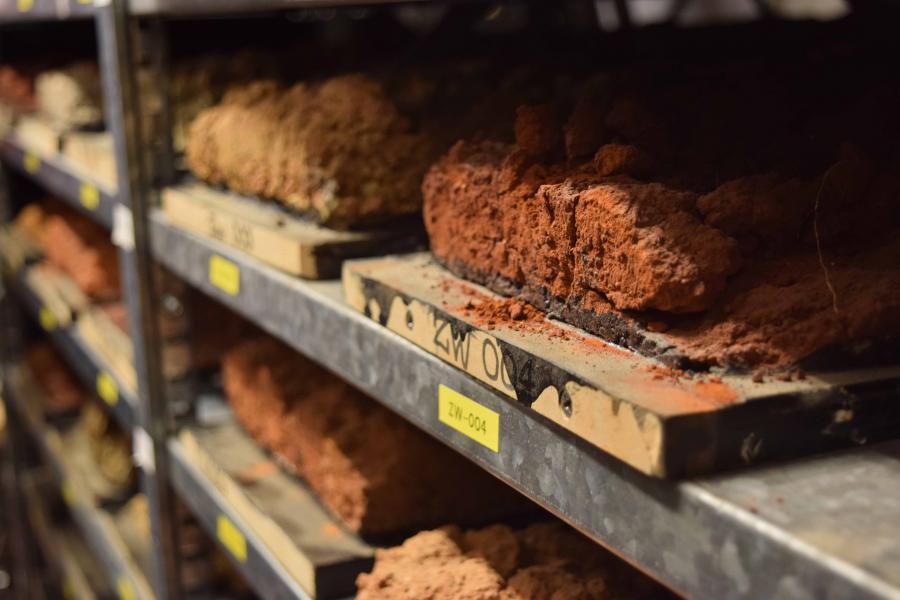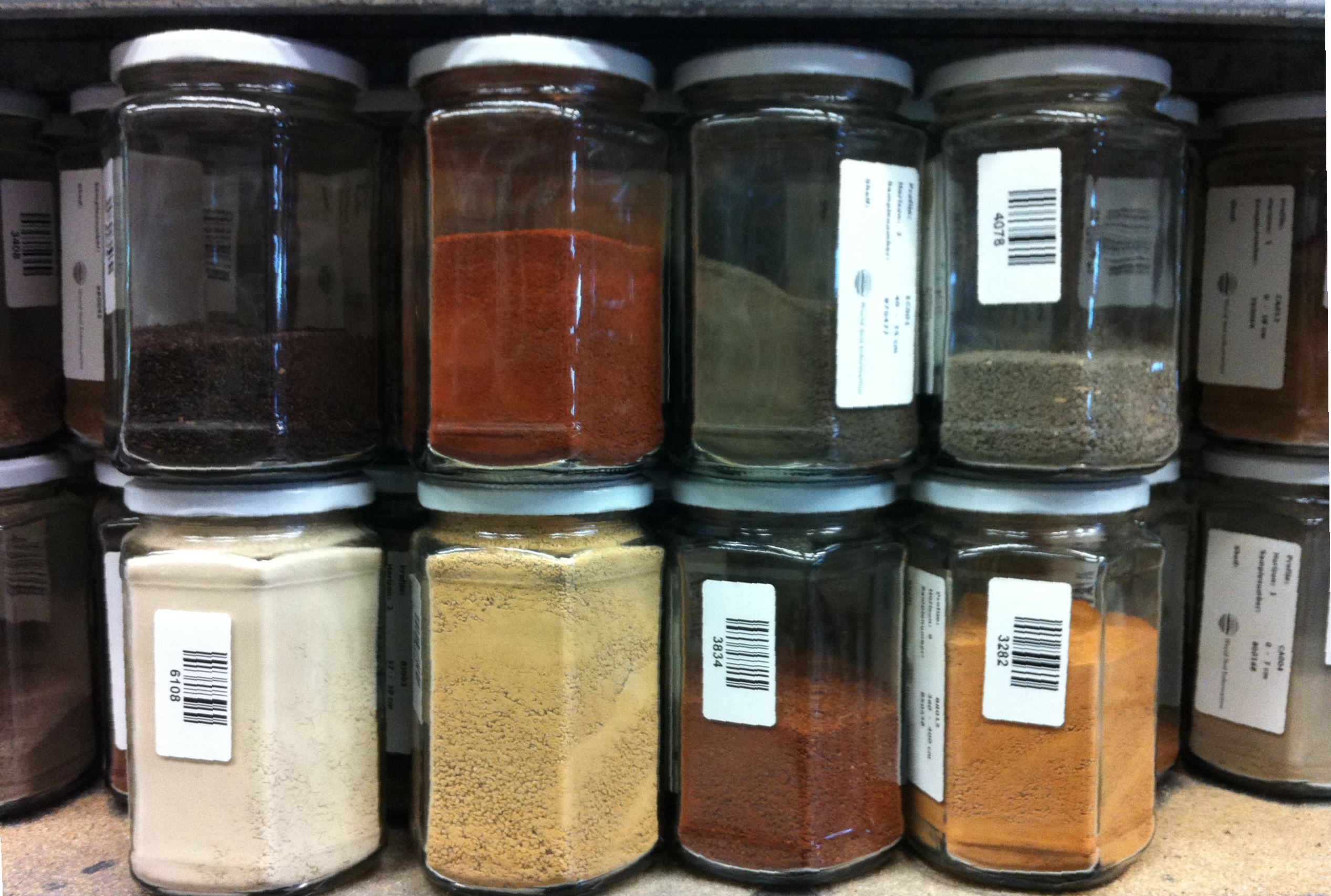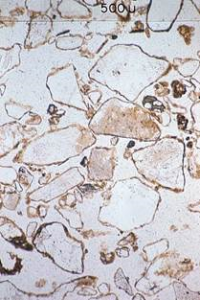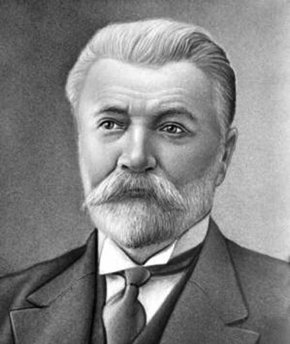ISRIC Collections
ISRIC—World Soil information, as the World Data Centre for Soils (WDC-Soils), manages several physical collections of soil materials.
World Soil Reference Collections (monoliths)
The soil reference collection of ISRIC is unique in the world and was built up to show representative examples of the units distinguished in the legend of the soil map of the world. These reference profiles – or soil monoliths - would be well documented and analyzed and therewith be an example and a resource for education, correlation and research.
Soil monoliths are undisturbed, vertical soil samples of about 1.5 m depth. They present the soil very close as to how they are seen in a profile pit in the field, with the layering, colours and structure of the soil. The collection has over 1100 soil monoliths from around 82 countries in the world. The collection represents a wide range of geographic areas and environments, soil types, soil processes and human impact on soils. A reference profile is fully documented (description and images from the field), fully analysed and additional sampling materials are available for each of the soil horizons for relevant future research. The collection is considered a cultural world heritage collection.

Samples from the World Soil Reference Collection (photo credit: Annamária Laborczi)
The reference collection of soil samples from the reference profiles described in the ISRIC Soil Information System (ISIS) database, which is part (a schema) of the World Soil Information Service (WoSIS) since 2016, have been fully analyzed by standard methods.
Maintenance of the data, completion of analytical data, and gradual expansion of the collection remains an important task but emphasis will shift to use of the data, verification for applications, and data generation by pedotransfer functions. Samples from ISRIC's World Soil Reference Collection have been provided to various research groups for specialized studies, such as:
- Evaluation of the ability of mid-infrared diffuse reflectance spectroscopy (4000–602 cm-1) to predict chemical and textural properties for a globally distributed soil spectral library by ICRAF, Kenya
- Spectral reflectance based indices for soil organic carbon quantification by Wageningen University and Universite Catholique de Louvain, and
- Model development for estimating clay content from the water content of soils of different clay mineralogy by Aarhus University, Denmark

The World Soil Reference Collection is unique in the world (photo credit: Annamária Laborczi)
Micromorphological collections
ISRIC - World Soil Information also manages several micromorphological collections:
- ISRIC systematic collection - Large thin sections from the profiles described in the ISRIC Soil Information System (ISIS, now WoSIS)
- Schmidt - Lorenz collection - Contains over 15000 small thin sections of soils, mainly from Europe, Africa and Australia
- Jongerius - STIBOKA collection - Over 6000 thin sections and blocks, mainly from Dutch and European soils and sediments. The collection has been established by the late Prof A. Jongerius, former Head of the Department of Micropedology and Mineralogy of the Dutch Soil Survey Institute (STIBOKA) in Wageningen and further expanded by Dr M Kooistra.

Thin section, Micro, B-horizon, Dystric Regosol. Vindeln, Sweden.
A page with translation of micromorphological terms can be found here.
The soil reference collection requires continued attention and quality investment. This means scrutinizing reference data, assessment and documentation of the collection and acquisition and disposal of collection objects. To ensure the quality of the collection and provide accountability, ISRIC has been working towards compliance with Spectrum procedures of museum collection management. Read more on the policy of management of the reference collections here.
Soil Map Collection
In its capacity of WDC-Soils, ISRIC has digitized most of its map collection - This collection of over 6000, mainly small scale (1 : 200 000 or smaller) soil and soil related maps, with an emphasis on the developing world can be consulted through our library page.
The ISRIC library contains over 20 000 titles, half of which can be classified as "grey literature" (i.e. publications produced on all levels of government, academics, business and industry which are not controlled by commercial publishers).
Further soil-related collections
ISRIC also preserves the following soil collections:
- Glinka Memorial Collection - A collection of some 50 monoliths with an interesting history.
 The World Soil Museum houses 90-year-old soil samples of remarkable historical value. They were collected under the supervision of one the most famous soil scientists in the world: the Russian professor Konstantin D. Glinka. The story of this ‘Glinka collection’ has now been unravelled by ISRIC’s guest researcher Cristine Muggler, professor at the Universidade Federal de Vicosa in Brazil. The story, as well as some of the ‘Glinka soil samples’, can be found at the Museum. Konstantin Glinka, born in 1867, was a student of Vasily Dokuchaev who is regarded as the founding father of soil science. Glinka made a great contribution to the dissemination of Russian soil science because he could speak English and German. His excellent knowledge about the different soil types in the former Soviet Union and his language skills contributed to the popularity of this director of the Leningrad Agricultural Institute among the international soil scientific community. It came as no surprise when, in 1927, he was invited to send samples of different Russian soils to the first congress of the newly founded International Soil Science Society in Washington. Glinka’s group collected more than fifty soil profiles and, after a long trip by rail and ship, they arrived. Unfortunately it was too late: the congress had already finished. So the samples went into storage at the US Conservation service where they remained untouched for years. Thirty years ago, these historical boxes were shipped from Washington to Wageningen to become part of the World Soil Museum. In the 1990s ISRIC developed a project to revisit the sites where Glinka’s students had worked and to collect new samples. In fact, ISRIC is still extending its Russian acquisitions. The collection as a whole provides information on how Russian soils have changed over the last century as a result of pollution from heavy metals, radionuclides, acid rain and fertilizers ‘The Glinka memorial collection is a fine example of the “soil treasures” maintained by ISRIC’, concludes Cristine Muggler. That is why she carefully documented the origin and value of the collection.
The World Soil Museum houses 90-year-old soil samples of remarkable historical value. They were collected under the supervision of one the most famous soil scientists in the world: the Russian professor Konstantin D. Glinka. The story of this ‘Glinka collection’ has now been unravelled by ISRIC’s guest researcher Cristine Muggler, professor at the Universidade Federal de Vicosa in Brazil. The story, as well as some of the ‘Glinka soil samples’, can be found at the Museum. Konstantin Glinka, born in 1867, was a student of Vasily Dokuchaev who is regarded as the founding father of soil science. Glinka made a great contribution to the dissemination of Russian soil science because he could speak English and German. His excellent knowledge about the different soil types in the former Soviet Union and his language skills contributed to the popularity of this director of the Leningrad Agricultural Institute among the international soil scientific community. It came as no surprise when, in 1927, he was invited to send samples of different Russian soils to the first congress of the newly founded International Soil Science Society in Washington. Glinka’s group collected more than fifty soil profiles and, after a long trip by rail and ship, they arrived. Unfortunately it was too late: the congress had already finished. So the samples went into storage at the US Conservation service where they remained untouched for years. Thirty years ago, these historical boxes were shipped from Washington to Wageningen to become part of the World Soil Museum. In the 1990s ISRIC developed a project to revisit the sites where Glinka’s students had worked and to collect new samples. In fact, ISRIC is still extending its Russian acquisitions. The collection as a whole provides information on how Russian soils have changed over the last century as a result of pollution from heavy metals, radionuclides, acid rain and fertilizers ‘The Glinka memorial collection is a fine example of the “soil treasures” maintained by ISRIC’, concludes Cristine Muggler. That is why she carefully documented the origin and value of the collection.
- Kubiena collection - Horizon correlation samples from 11 profiles from Russia in display boxes
- Mohr collection - Hundred of display boxes with soil materials, mainly from the former Dutch East Indies and Africa